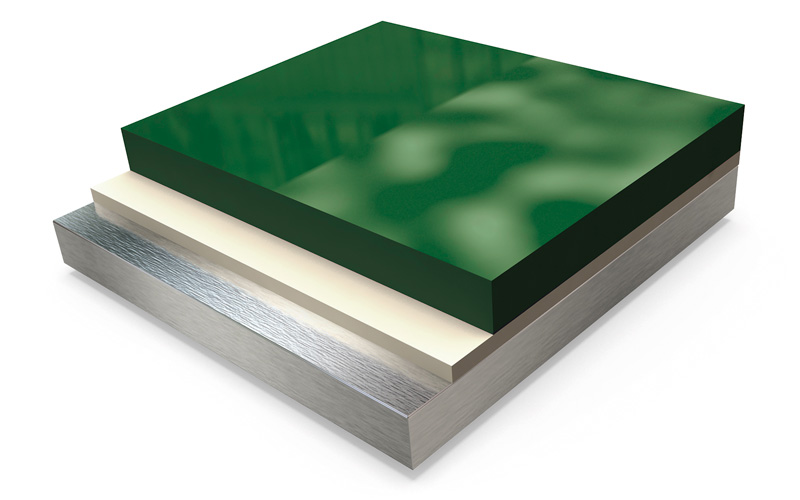
The loss or reduction of gloss of a surface is a relatively common paint defect that can occur during the clear coating process in repairs.
The clear coat is the last coat to be applied, and therefore the most visible one. Any defect in this coat will be easily recognisable, and even if the customer has no technical knowledge of painting, when the vehicle is delivered it will be very difficult to conceal an irregularly shaped and dull clear coated surface.
A correct application of the final coat of lacquer will be decisive to obtain a quality repair and an excellent final appearance of the car to the customer’s satisfaction. Also, to prevent the appearance of problems such as gloss loss in paint, professionals will make good use of materials and repair time, for maximum productivity and profitability in the workshop.
What are gloss losses in automotive paint?
Gloss reduction or loss in automotive paintwork occurs when a painted surface has a more matte and less glossy finish than required, with a different gloss intensity of the repaired surface compared to the rest of the parts.

This is a defect that is easy to observe with the naked eye, even from a position far away from the surface, and that does not usually have surface irregularities as it can happen with other paint defects such as sinkage or silicones.
Causes of gloss loss and how to prevent it
The reasons why this defect appears are due to different factors, so taking into account all these possible causes will allow you to anticipate a possible error.
Inappropriate preparation of intermediate coat paints
A common cause of gloss loss is related to the pre-preparation of intermediate coats, especially during the filling process.
To prevent this defect the finish coat should be applied to a filler surface that has been properly sanded beforehand. The drying times recommended by the manufacturer must be observed.
Furthermore, the way the sanding is carried out, using a suitable sandpaper grit and uniform pressure and movement, will influence the preparation of the intermediate coat and the possible absorption of the finish gloss by the undercoats.
Failure to adapt the mixture to the room environment
Room temperature and humidity are external factors that can influence a possible drop in final gloss.
To adapt the choice of the thinner or hardener to be used, first consider the manufacturer’s technical specifications, a correct mixing ratio, and adapt the product to the environmental context.
- High temperatures (summer): slower hardeners and thinners. The possibility of using drying retardants or elasticisers can be considered.
- Mild temperatures (spring and autumn): medium hardeners and thinners.
- Low temperatures and higher humidity (winter): fast hardeners and thinners. In cold and humid weather conditions, the clear coat layer can close up, and leave solvents with no time to evaporate.
Lack of maintenance of extraction equipment
The periodic maintenance of extraction filters in booths and plenums is essential to prevent paint defects such as gloss loss.
The correct extraction and suction capacity of this equipment will allow absorbing the mists produced during the application, thus preventing them from remaining suspended in the air and being deposited in the form of a thin layer on the recently applied clear coat.
It is also convenient to control humidity levels and watertightness in the booths, always trying to keep suitable environmental temperature and humidity conditions for a correct application.
Inappropriate surface cleaning and preparation
Do not wash vehicles with harsh detergents, and do not put them through car wash tunnels in days following application.
Do not polish the surface until the paint has dried completely. Also, use the appropriate sanders and polishes for each work.
Failure to observe drying times and temperatures between coats
Failure to observe the drying time and temperature established by the manufacturer may result in small blooming appearing on the surface. Varying the drying speed and temperature to free up the booth so as to increase work productivity is a practice that can result in loss of gloss.
Steps to fix loss of gloss in paint
If the defect is only present on the surface of the part, proceed as follows:
- Surface sanding
First, sand the areas that have suffered loss of gloss with a sander and a P1500 sandpaper, increasing the grit as required. Then, smoothen the surface with a P3000 sandpaper to remove any sanding marks that may have been generated previously. Once the surface has been sanded, clean the dust with a degreaser and a microfibre cloth.
- Polishing
Then, apply a quick polish with the polishing machine, ensuring uniform pressure and movement. Finally, clean the area with a cleaning cloth to assess the result obtained.
If the defect is more serious, you will have to perform the repainting process from the beginning.


